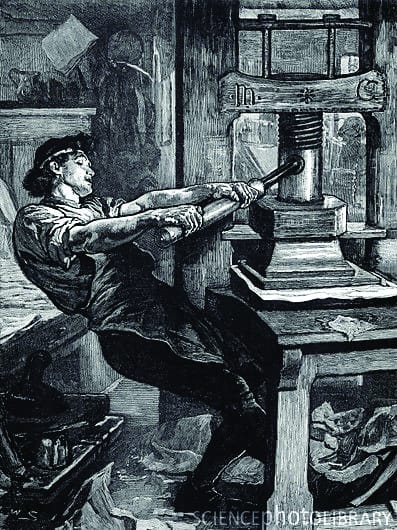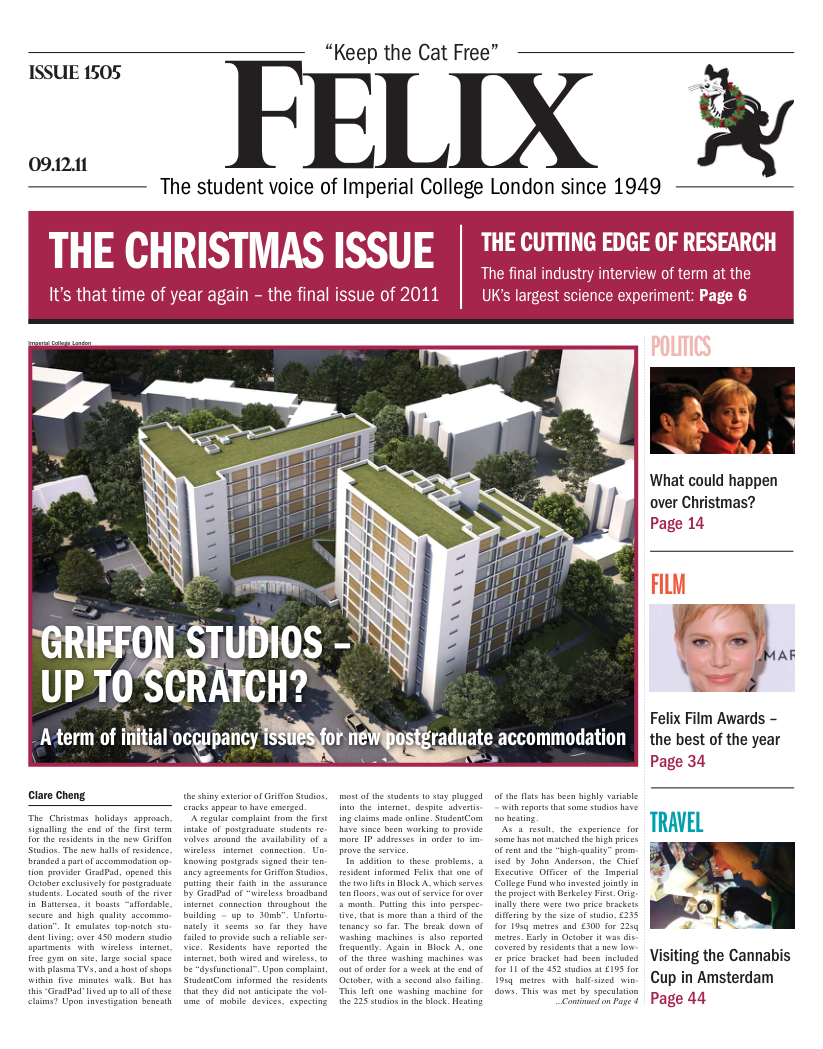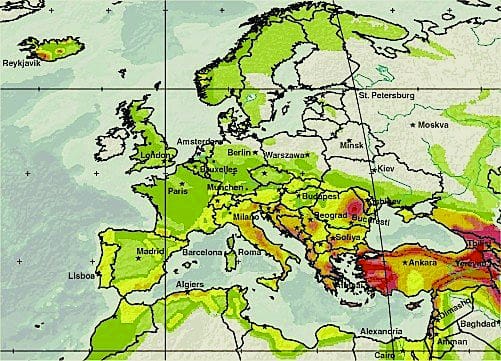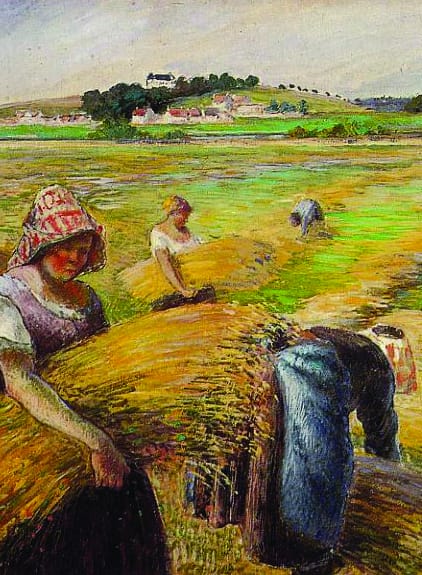The Paper days are over
The days of the printed newspaper are numbered, argues Marie-Laure Hicks, as the salad days of social media see a decline in the printing of broadsheets and Berliners

Take the tube and read a newspaper. Most people there are doing the same, but their number is in rapid decline. Between 2007 and 2009, newspaper circulation dropped by 25% in the UK. Only the US saw a heavier decline. This $50bn business, employing 400,000 people in the US alone, is in trouble. In the space of two years, eight major newspaper chains have declared bankruptcy and newsrooms have been cut by a quarter. British newspapers have also needed to lay off workers. The newspaper industry is living its worst crisis since the Great Depression.
Newspapers are not simply losing readers, they are also losing huge amounts of funding. Companies now prefer online ads to printed publicity. This is a major issue as, historically, advertisements represented up to 80% of newspaper revenues. Online start-ups, blogs and websites are proving ever more popular. Moreover, even if newspapers have their own website, it is notably difficult to make money off them – why would people pay for subscriptions when they have access to almost all information for free online? People’s habits are changing. Why read an entire newspaper if you only really care about one or a couple sections? A website will, most likely, contain all the information, if not more, about a reader’s specific interests.
But the internet is young, and the competition-bloggers and news start-ups inexperienced. Some have even argued that this lack of knowledge, connections and analysis could pose a risk to democracy. The right to Freedom of Speech, however, keeps governing bodies in check. Already the White House and Congress are subject to reduced coverage due to cost cuts. Events could happen unnoticed and uncovered. Governments have discussed taking action to help newspapers. In France, the state will provide free subscriptions to 18-year-olds for a year, in the hope of turning them into loyal readers and customers. Then again, relying on Governments to save the paper industry could go against the freedom of the press to a certain extent. Newspapers would be biting the hand feeding them.
Democracy, however, need not worry, because the big boys are still out there. The greater use of cameras and microphones means that news coverage is wider and faster, not missing the smallest detail. Obama and Sarkozy’s little gaffe (muttered complaints about the Israeli PM while their microphones were on for all the press to hear) earlier this year is probably not going to be the last of its kind. Newspapers still have the resources, influence and power to hold an important place in the world. Wikileaks is the perfect example for this; Assange leaked information for a few years and was only noticed by the public eye when the US diplomatic cables were published in three, then five major newspapers, namely The Guardian, The New York Times, Der Spiegel, Le Monde and El País. The impact would not have been as strong without the unprecedented collaboration of news giants.
Newspapers need a new model to survive
In fact, going online is a drive for competition and higher quality and even more free speech. Bloggers hold journalists accountable and open a platform for discussion. News is becoming more social and papers are beginning to understand this. The New York Times has received accolades based on its use of social networks. Its employees have aggressively adopted Twitter and, on average, a Times story is tweeted every four seconds. British papers have followed a similar course by developing Facebook apps. By the end of November 2011, four million people had signed up for The Guardian’s app. These produced massive increases in readership, especially amongst young people. Social networks are being used as a platform for debating, commenting and sharing news stories. Google is also participating in improving the quality of webpage content with Google Panda. This algorithm pushes “low quality” (containing large amounts of advertising) websites to the end of search results and “high quality” (large amount of text, news and social networking) websites at the top. Furthermore, the web represents a new market for papers as they reach more people. The Guardian now counts half as many American readers as British ones.

The move from readers to the web is forcing newspapers to find a new model just to survive. For the moment, a hybrid between paper and webpage is still needed. Not enough money is made online for papers to survive. An example is Politico which has three million online readers but printed ads account for 50% of its revenues. Internet returns are not increasing as fast as hoped for, but this is slowly changing.
The most effective model so far has proven to be the limited free access –pay walls set up by The Financial Times and The New York Times, for example. The New York Times experimented with a first pay wall that resulted in a big drop in readership and was therefore scraped. This also happened to The Times in the UK when it first launched its pay wall. Currently The New York Times and Financial Times allow free access to a limited number of articles per month and increasing levels of access for a subscription charge, the lowest being $15. This generates enough traffic for ad revenue and encourages people to subscribe. The results are very promising. Traffic is up 2% on the New York Times website and total digital earning reached $210m – enough to operate a profitable news room. Theoretically The New York Times could stop printing tomorrow and survive. Similarly, The Financial Times has seen an increase in 30% for online subscriptions and The Berliner Morgenpost has doubled the traffic on its website since its pay wall went up.
The other model for which a number of groups have opted is the non-profit organisation. An example is ProPublica, founded by Paul Steiger, a former Wall Street Journal managing editor. This NGO specialises in investigative journalism – a rather costly business – and relies entirely on donations. So far support has only increased, reaching more than $10m in 2010, but this might not last forever. Other than bankruptcies, some great failures have also occurred as news corporations try to find their place in the new technology age. Murdoch launched an iPad exclusive newspaper, The Daily, available for 99 cents a week. The app needed 500,000 subscribers to cover costs. It had 120,000 users in October, eight months after being made available. Knowledge of the “old” paper industry is not enough.
Brand loyalty, perhaps also known simply as trust is going to be a determining factor in the survival of newspapers. Big and respected names that provide good analysis will make it through this crisis. Trust is also essential as shown by the phone hacking saga. Community papers, affecting smaller and well defined groups of people will maintain their place. Turning a failing newspaper into a free daily has had its success stories too. Even if it leaves the paper behind, the newspaper industry has survived the rise of the radio and the television and is not likely to end now. This new challenge will only make it come out better and stronger. So enjoy your newspaper while it lasts and get your tablet ready.









